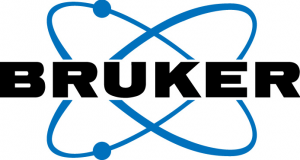Corporate Workshop
Home
> 프로그램 > Corporate Workshop


- Date
- 6월 30일 11:45-12:15
- Speaker
- Seongcheol Hong CV
- Affiliation
- Thermo Fisher Scientific
- Title
- Introduction to New products of Thermo Fisher Scientific related to Orbitrap HRMS system for Proteomics
- Abstract
-


- Date
- 6월 30일 12:15 - 12:45
- Speaker
- Sangtae Kim CV
- Affiliation
- Bertis Inc
- Title
- Deep learning and explainable artificial intelligence for targeted proteomics
- Abstract
-


- Date
- 6월 30일 12:15 - 12:45
- Speaker
- Seung Joon Lee CV
- Affiliation
- Soulbrain Holdings Co., Ltd.
- Title
- Proteome-wide interrogation of plasma through integration of Proteograph™ technology
- Abstract
-


- Date
- 6월 30일 12:15 - 12:45
- Speaker
- Mahoney CV
- Affiliation
- Seer, Inc
- Title
- Multi-nanoparticle Workflow Enables Deep Plasma Proteomics at Scale, with Enhanced Precision, and Depths of Coverage.
- Abstract
-


- Date
- 7월 1일 11:45 - 12:15
- Speaker
- Jin Nyoung Choi CV
- Affiliation
- Agilent Technologies Korea
- Title
- Streamlined workflow solution with automated sample preparation and advance LC/MS technology for high throughput protein biomarker quantification
- Abstract
-


- Date
- 7월 1일 11:45 - 12:15
- Speaker
- Young Chan Kim CV
- Affiliation
- MDxK (Molecular Diagnostics Korea Inc.)
- Title
- Protein Biomarker Discovery to accelerate Research
- Abstract
-


- Date
- 7월 1일 12:15 -12:45
- Speaker
- Cory E CV
- Affiliation
- Merck KGaA
- Title
- Racing Through Separations Unhindered: The Use of Monolithic UHPLC Columns for High-Throughput and Robust Analyses
- Abstract
-


- Date
- 7월 1일 12:15 - 12:45
- Speaker
- 브루커 코리아 CV
- Affiliation
- Bruker Korea Co., LtD
- Title
- Expanding the horizons of single cell research
- Abstract
-

Room 307, Seoul National University Medical School, 103, Daehak-ro, Jongno-gu, Seoul, Republic of Korea
Phone: (+82)2-393-8328 E-mail : admin@khupo.org Homepage : http://www.khupo.org
Official Secretariat: The Plan B
Room B10, 55, APEC-ro, Haeundae-gu, Busan, Republic of Korea
FAX: +82-51-745-8407 Phone: (+82)2-393-8328 Homepage : https://www.planbgroup.org/
COPYRIGHT ⓒ 2020 KHUPO. ALL RIGHTS RESERVED.


